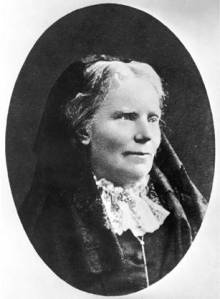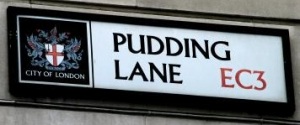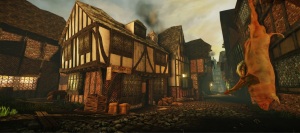
This day in London’s history: on 3 February 1821 Elizabeth Blackwell was born; she was the first woman to receive a medical degree in the US, and she was the first woman on the UK Medical Register.
In 1874, Blackwell was involved with the London School of Medicine for Women, which opened in 1874. The primary goal was to prepare women for the licensing exam of Apothecaries Hall. The Apothecaries Act of 1815 had granted the society the power to license and regulate medical practitioners throughout England and Wales.
The Worshipful Society of Apothecaries of London was founded in 1617 by James I to prevent unqualified people from making medicine. His Royal Apothecary established the first Apothecaries Hall in Pudding Lane in 1633. (It was destroyed in the Great Fire of London and was rebuilt in Blackfriars Lane in 1786.)
Put aside any notion of cakes or desserts that the name Pudding Lane may bring to mind; the truth is far from appetising. The lane, once part of the meat centre of London, earlier had the name of Red Rose Lane, but it was on the route where the ‘puddings’ – parcels of offal – were transported to be thrown into the river. Historian and Londoner John Stow explains it most eloquently:
 “Red Rose lane, of such a sign there, now commonly called Pudding Lane, because the butchers of Eastcheap have their scalding house for hogs there, and their puddings, with other filth of beasts, are voided down that way to their dung boats on the Thames.”
“Red Rose lane, of such a sign there, now commonly called Pudding Lane, because the butchers of Eastcheap have their scalding house for hogs there, and their puddings, with other filth of beasts, are voided down that way to their dung boats on the Thames.”
Pudding Lane is most famous for being where the Great Fire of 1666 first broke out, causing the destruction of 13,000 houses and 14 streets – though, amazingly, only 11 deaths.
Technically, there is a tenuous dessert connection with the name: the fire started in the house of a man called Faynor (or Farryner), the king’s baker. The lane was narrow, with pitch-covered wooden houses and led to the riverside warehouses full of oil and combustible materials such as hay, coal, and timber.
 In 2013, six students studying Game Art Design at DeMontfort University in Leicester took part in a new competition called ‘Off the Map’. They established Pudding Lane Productions, took part in the competition, and won with their 3D reproduction of 17th-century London including a view of Pudding Lane as depicted above.
In 2013, six students studying Game Art Design at DeMontfort University in Leicester took part in a new competition called ‘Off the Map’. They established Pudding Lane Productions, took part in the competition, and won with their 3D reproduction of 17th-century London including a view of Pudding Lane as depicted above.

3 responses to “Medical women, apothecaries, and Pudding Lane”
[…] for instance, Pudding Lane, which was where the Great Fire of 1666 started. Given that the fire started in a baker’s house […]
[…] fire started in the house of the king’s baker, in Pudding Lane, which we have looked at in a recent post on the grosser names of London’s streets. It does lead […]
[…] Pudding Lane, home to the first great hall of the Worshipful Society of Apothecaries (not a typo, it is the Society and not the Company). The hall, like so many other halls and London landmarks, was destroyed in the Great Fire of 1666 and was later rebuilt in Blackfriars Lane. The Apothecaries also have a connection with the British Museum and the Chelsea Physic Garden, which has an entrance in Swan Walk and therefore a connection with the famous Doggett Coat and Badge race, which is organized by the Worshipful Company of Fishmongers. […]